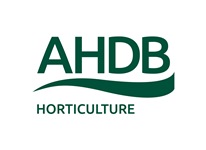All 4 entries tagged Tuyv
No other Warwick Blogs use the tag Tuyv on entries | View entries tagged Tuyv at Technorati | There are no images tagged Tuyv on this blog
June 30, 2015
Aphid and Turnip yellow virus News
Brassica virus and peach potato aphid update from Wellesbourne, Warwickshire:
- 18-22/06/2015, lots M. persicae were caught (12 yellow water traps), 88% of those tested were carrying TuYV.
- 22-25/06/2015, lots M. persicae were caught (12 yellow water traps), 85% of those tested were carrying TuYV.
- From the Rothamsted Insect Survey suction trap catch, 15-21/6/2015, 107 M. persicae were identified, 93% of those tested were carrying TuYV.
Brassica virus and peach potato aphid update from Kirton, Lincolnshire:
- 18-22/06/2015, lots M. persicae were caught (12 yellow water traps), 75% of those tested were carrying TuYV.
- 22-25/06/2015, lots M. persicae were caught (12 yellow water traps), 65% of those tested were carrying TuYV.
- From the Rothamsted Insect Survey suction trap catch, 15-21/6/2015, 152 M. persicae were identified, 86% of those tested were carrying TuYV.
Turnip Yellows Virus (TuYV), formerly known as Beet western yellows virus, is a very important pathogen of vegetable brassicas and oilseed rape. It is spread by the peach potato aphid (Myzus persicae). This data is collected with funding from the BBSRC Horticulture And Potato Initiative (HAPI).
Press release on the new round of HAPI projects involving the University of Warwick
Diana Katschnig and Angela Hambidge, Plant-Virus Interactions Group, University of Warwick
June 23, 2015
Aphid and Turnip yellow virus News
Brassica virus and peach potato aphid update from Wellesbourne, Warwickshire:
- 11-15/06/2015, high numbers of M. persicae were caught (12 yellow water traps), 91% of those tested were carrying TuYV.
- 15-18/06/2015, high numbers of M. persicae were caught (12 yellow water traps), 80% of those tested were carrying TuYV.
- From the Rothamsted Insect Survey suction trap catch, 08-14/06/2015, 51 M. persicae were identified, 67% of those tested were carrying TuYV.
Brassica virus and peach potato aphid update from Kirton, Lincolnshire:
- 11-15/06/2015, 1 M. persicae was caught (12 yellow water traps), but this individual did not carry TuYV.
- 15-18/06/2015, high numbers of M. persicae were caught (12 yellow water traps), 68% of those tested were carrying TuYV.
- From the Rothamsted Insect Survey suction trap catch, 08-14/06/2015, 0 M. persicae were identified.
Turnip yellows virus (TuYV), formerly known as Beet western yellows virus, is a very important pathogen of vegetable brassicas and oilseed rape. It is spread by the peach potato aphid (Myzus persicae). This data is collected with funding from the BBSRC Horticulture And Potato Initiative (HAPI).
Press release on the new round of HAPI projects involving the University of Warwick
Diana Katschnig and Angela Hambidge, Plant-Virus Interactions Group, University of Warwick
June 19, 2015
More on Aphid and TuYV News!
The data on Aphid and TuYV news below are being collected as part of a new BBSRC HAPI project led by Dr John Walsh. Peach potato aphids from the Rothamsted Insect Survey suction traps at Wellesbourne, Warwickshire and Kirton, Lincolnshire and yellow water traps adjacent to cabbage crops in Warwickshire and Lincolnshire are being tested for the presence of Turnip yellows virus (TuYV; formerly known as Beet western yellows virus). The virus has been shown to significantly reduce yields of vegetable brassicas, cause tipburn in cabbage and also infect oilseed rape. This is part of a new BBSRC HAPI research project led by Dr John Walsh at the University of Warwick. The project involves a collaboration with colleagues at Rothamsted Research and Allium and Brassica Agronomy and will investigate the development of integrated approaches, including genomic aspects, for pest and disease control in horticultural field crops Press release on the new round of HAPI projects involving the University of Warwick. Most of the funding comes from BBSRC http://www.bbsrc.ac.uk/news/food-security/2015/150601-n-4m-fund-important-food-crops/ with additional funding from industry partners including AHDB Horticulture, Syngenta UK Ltd., Dow Agro Sciences Ltd., A L Tozer Ltd., Sakata UK Ltd., Enza Zaden UK Ltd. B.V. and Rijk Zwaan UK Ltd.
Over the next 3 years, weekly information on the numbers of peach potato trapped and the numbers carrying TuYV will be posted on the AHDB Horticulture Pest Blog.
Aphid and TuYV News
Brassica virus and peach potato aphid update from Wellesbourne, Warwickshire:
- 04–08/06/2015, high numbers of M. persicae were caught (12 yellow water traps), 73% of those tested were carrying TuYV.
- 08-11/06/2015, 60 M. persicae were caught (12 yellow water traps), 73% of those tested were carrying TuYV.
- From the Rothamsted Insect Survey suction trap catch, 03-07/06/2015, 15 M. persicae were identified, 60% of these were carrying TuYV.
Brassica virus and peach potato aphid update from Kirton, Lincolnshire:
- 04–08/06/2015, 74 M. persicae were caught (12 yellow water traps), 76% of those tested were carrying TuYV.
- 08-11/06/2015, 13 M. persicae were caught (12 yellow water traps), 31% of these were carrying TuYV.
- From the Rothamsted Insect Survey suction trap catch, 03-07/06/2015, 14 M. persicae were identified, 71% of these were carrying TuYV.
Turnip yellows virus (TuYV), formerly known as Beet western yellows virus, is a very important pathogen of vegetable brassicas and oilseed rape. It is spread by the peach potato aphid (Myzus persicae). This data is collected with funding from the BBSRC Horticulture And Potato Initiative (HAPI).
Diana Katschnig and Angela Hambidge, Plant-Virus Interactions Group, University of Warwick
 Diana Katschnig
Diana Katschnig

 Please wait - comments are loading
Please wait - comments are loading
 Loading…
Loading…


